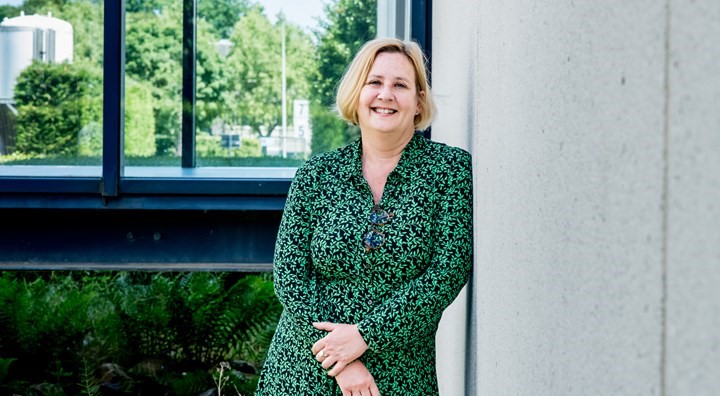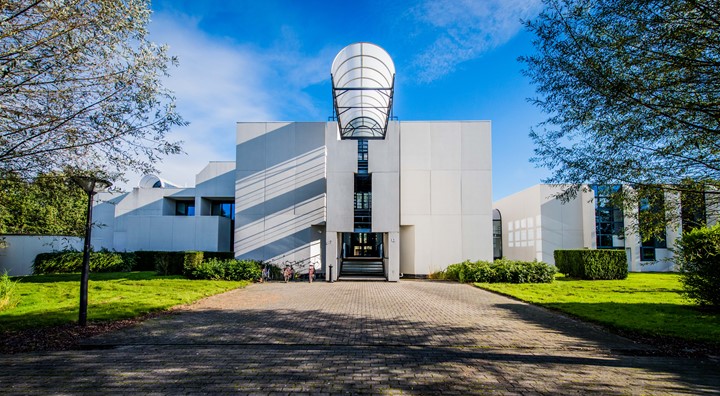U-SAVE
The U-SAVE project (“Smart Windows for Solar Heat Control and High Thermal Insulation in Commercial Buildings”) addresses the challenges for energy-efficient windows by developing and demonstrating a new smart window that can adapt its properties to seasonal changes, in order to offer the best possible solution for energy savings in summer and winter.


The built environment is responsible for approximately one third of global annual energy consumption and associated CO2 emissions. Moreover, rising temperatures in the summer lead to increased heat stress, also in countries such as Belgium and the Netherlands. Therefore, the total energy consumption for buildings is expected to increase significantly due to the increased installation of air conditioning units in sectors where their use is still quite limited, such as residential houses. For non-residential buildings (e.g. buildings for education, catering, hospitals, offices, industrial halls), the use of air conditioning units to meet the cooling demand already makes a major contribution to energy consumption for buildings and this will increase further in the coming years. Following the 2015 Paris Agreement, the Dutch government has set the target in 2019 to reduce CO2 emissions in the built environment by 3.4 Mton by 2030, of which 1 Mton must result from making non-residential buildings more sustainable. Similar objectives have been agreed in Flanders and Belgium. However, between 2019 and 2021, CO2 emissions in the Dutch built environment increased by 1.5 Mton. This shows the need to drastically change our approach to reducing energy consumption and CO2 emissions in the built environment.
Currently, reducing the operational energy consumption of buildings is mainly based on increasing the insulation of walls, roofs, floors and windows. This approach significantly reduces the heat demand in a building and is very beneficial for reducing, for example, natural gas consumption in the Netherlands. However, rising temperatures and increasing implementation of air conditioning units lead to an increasing cooling demand in the Netherlands and Belgium. The established strategies to improve the insulation and airtightness of buildings do not influence or even increase the cooling demand of buildings. Therefore, it is necessary to switch to a two-pronged approach that reduces both heating and cooling demand. As the balance between heating and cooling demands and therefore building material requirements change between seasons, new materials need to be developed that can adapt to changing conditions while offering the most energy-efficient solutions, both in winter and during the summer.
Windows are responsible for 30 to 40% of the total energy consumption and 60% of the cooling demand in buildings. They are the lowest insulated part of the building envelope and have the highest interaction with sunlight due to their transparency. That is why window requirements change most between summer and winter. In winter, high insulation of windows and frames and high transmission of solar heat and natural light are required for a low heat demand and a healthy indoor climate. However, in summer, low solar heat transmission and adaptable shading are required to reduce cooling demand, and to meet problems with glare and high light intensities. These changing requirements cannot be sufficiently met by existing window, frame and sun protection products.
The U-SAVE project (“Smart Windows for Solar Heat Control and High Thermal Insulation in Commercial Buildings”) addresses these challenges for energy-efficient windows by developing and demonstrating a new smart window that can adapt its properties to seasonal changes, in order to offer the best possible solution for energy savings in summer and winter. The window consists of a thermochromic glass that autonomously adjusts its solar heat transmission to the requirements of the building interior. In addition, the latest designs and materials for the window arrangement will be implemented to ensure high insulation and a new type of frame will be developed to be applicable in non-residential buildings as well as to provide high insulation. In addition, an adaptive solar protection system will be developed based on semi-transparent slats that use a thermochromic material to adjust the amount of solar protection to suit the needs of the building. Within the U-SAVE project we will further develop the thermochromic technology towards pilot scale production and integrate it into a real window including frame. Here we will match the properties of each individual part of a window to achieve a smart window with the best possible energy saving properties in the Interreg region. We will also demonstrate the smart window in office buildings on the Brightlands Chemelot Campus in Geleen and we will conduct research into social acceptance and the influence of this window on health and indoor climate (TRL 7-8). This study will provide information on the perception and behavior of users with regard to the developed technologies, as well as on health-related effects, and this will provide essential information for further development and further scale-up to a commercial product after the end of the project.
We are focusing on demonstration in office buildings as we foresee here the greatest potential for the new product and we expect those buildings to be amongst the “early adopters” of the new technology. Due to the widespread implementation of air conditioning and the large window area in office buildings, the impact of thermochromic smart windows is greatest and total energy savings of up to 33% can be achieved on top of HR++ - the current standard in insulating glass.
More information can be found on the project's website.

Contact
dr. Lieve De Doncker

imo-imomec

Wetenschapspark 1, 3590 Diepenbeek, Belgium
